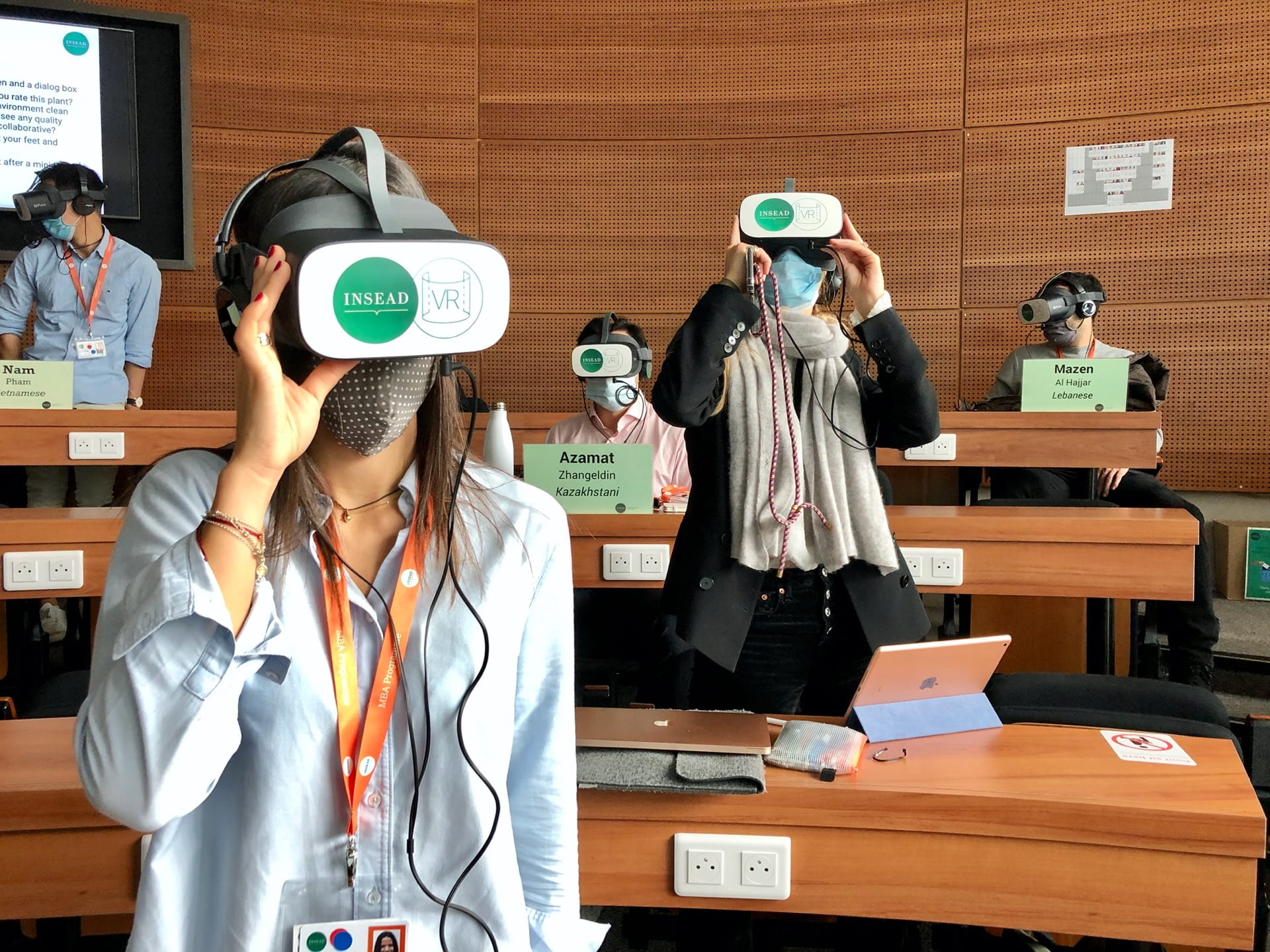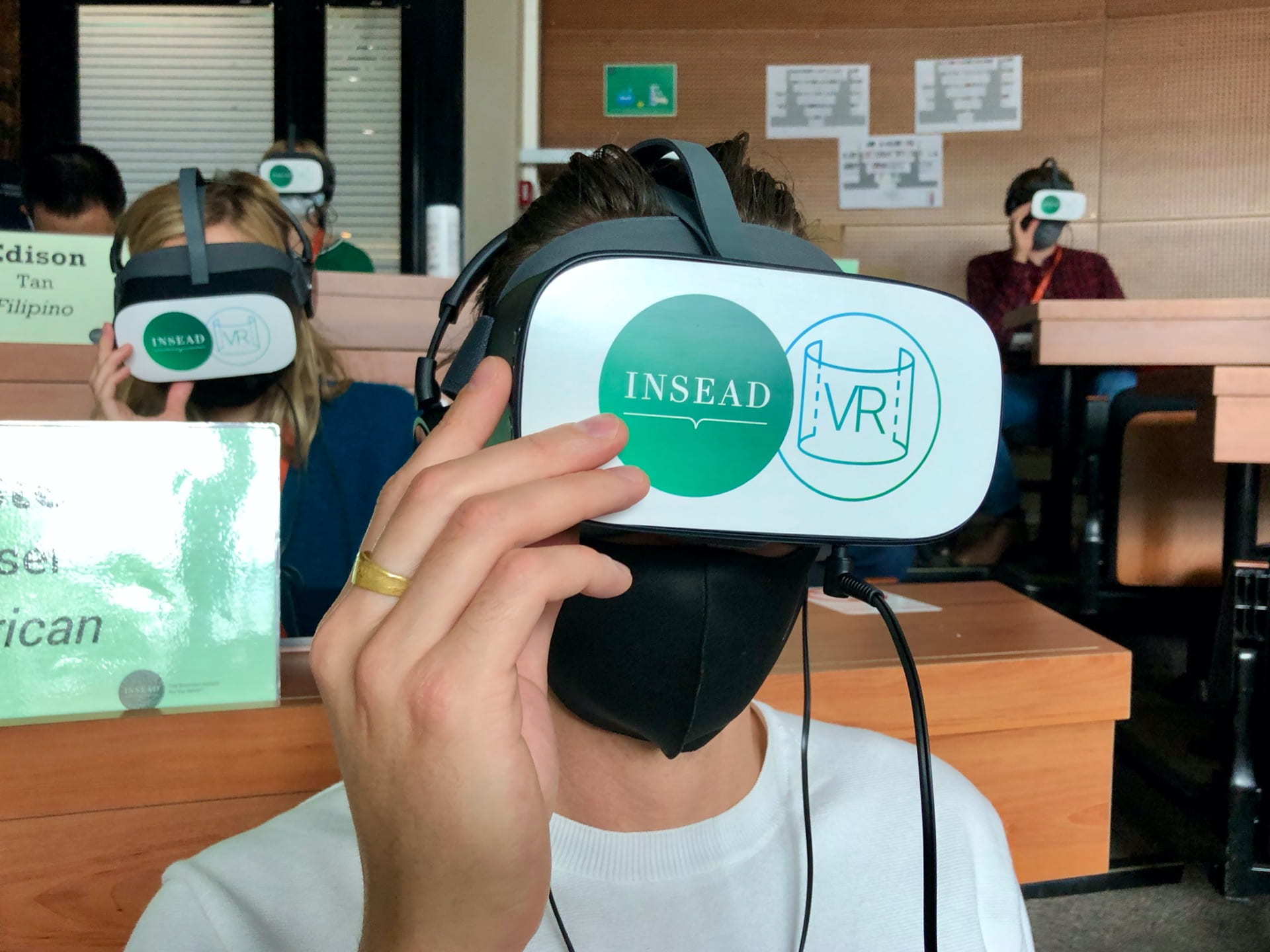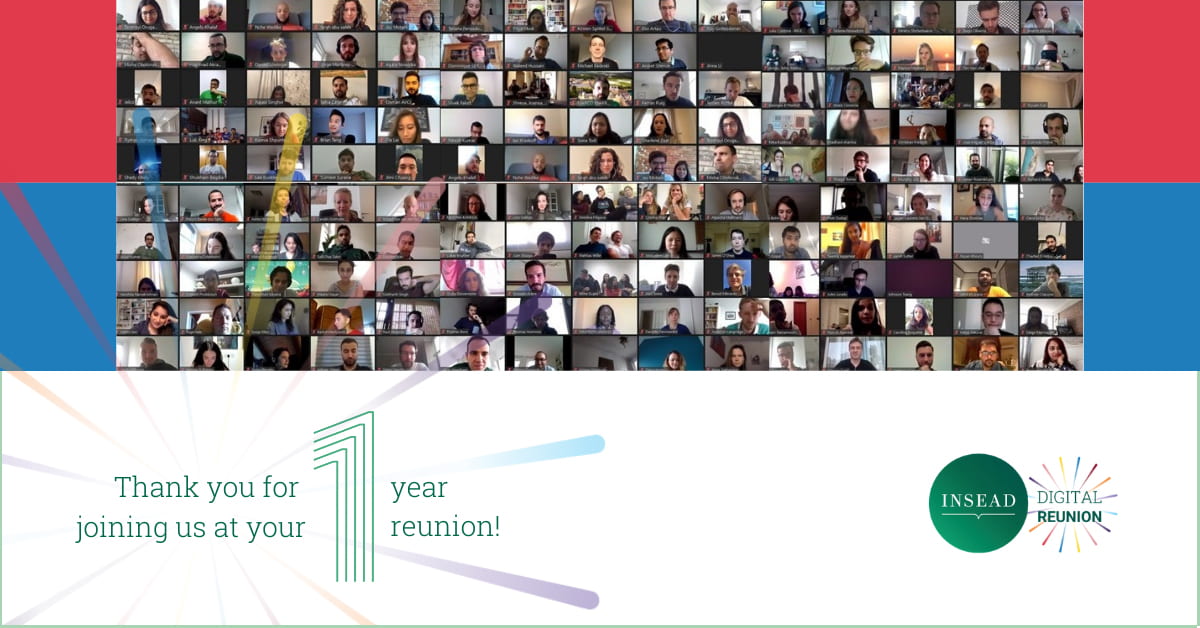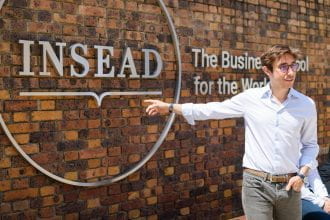How INSEAD leveraged digital technology to transform and adapt during Covid-19
Back in 2013, just as MOOCs started growing in popularity, INSEAD began rolling out a series of online programmes for leading corporate clients such as Microsoft and Accenture. It was part of the school’s evolving strategy for digital transformation, which included launching initiatives in data analytics and creating a new hub for business innovation.
Seven years later, when Covid-19 shut down in-person learning, those investments paid off. By then, INSEAD had a built strong portfolio of online programmes and deep expertise in digital technology. It was well-positioned to adapt—and it did. During the 2019/2020 academic year, the school coped with the effects of the pandemic by expanding its online offerings, accelerating technology initiatives, hosting digital-only events, and keeping students, faculty, staff and alumni connected online. It also used the disruption as an opportunity to innovate.
“Any big change in environment brings a mix of threat and opportunity.
What it ends up meaning depends, in part, on what you do with it.”
Peter Zemsky
Deputy Dean and Dean of Innovation at INSEAD

Focusing on people, process and technology
In early 2020, when faced with the prospect of digitising its offerings, INSEAD knew that it needed more than just Zoom to succeed. To deliver on its broad portfolio—spanning multiple degree programmes, executive education, lifelong learning and more—the school needed digital solutions that were robust, sophisticated and capable of serving a global audience.
Under the direction of Zemsky, INSEAD formed a steering committee to set the school’s strategy and lead a coordinated effort across the school. The committee set two priorities: One, to build the infrastructure needed to expand asynchronous learning (via recorded modules) and synchronous learning (via live modules). And two, to develop capabilities among faculty and staff to deliver new modes of teaching and engagement. This work raised fundamental questions about what and who INSEAD should teach in a rapidly changing world.
“The digital transformation of a business school is a lot about how you teach when things change suddenly, and who you teach because your courses become more accessible in terms of price of convenience,” explains Zemsky. “But the third piece—what you teach—is just as important. We need to transform what we teach because digital and data are increasingly impacting all functions and sectors.”
From a hardware perspective, INSEAD made targeted investments to adapt its courses and programmes for online learning. On both the Singapore and Fontainebleau campuses, it built Live Online Rooms (LORs) to support synchronous learning. Designed to optimise teaching on Zoom, LORs are outfitted with adjustable cameras, multiple screens, and professional lighting and microphones. Both campuses were also equipped with INSEAD Go-Live, a high-end digital platform for teaching groups in real time. Through Go-Live, participants have the flexibility to toggle between multiple views (i.e. to see the whiteboard, presentation, instructor or virtual classroom) and benefit from interactive features such as text chats and breakout rooms. The school also took steps to build a new multipurpose digital studio on the Singapore campus so faculty could self-record lectures or team up with a camera crew.


At the same time, the school accelerated its efforts to bring virtual reality to the classroom. In October, MBA students and executive education participants were among the first to test-drive immersive learning experiences that were powered by virtual reality. Wearing the latest VR headsets, students observed the assembly line of a tractor factory for an operations course; witnessed interpersonal relations in a boardroom for an organisational behaviour course; toured a wet market in Singapore for a product and service development course; and visited a beach in Zanzibar to study performance differences in organisations.
“It’s hard to get students to these places in normal circumstances,” says Zemsky. “With Covid, it was impossible. So, we really started to push the use of virtual reality to bring the world into the classroom.”
Engaging alumni online
INSEAD also expanded and transformed its lifelong learning offerings for alumni. Along with delivering more than 60 webinars and interactive workshops in 2019/2020, the school hosted its first-ever Summer Learning Festival for more than 50,000 alumni and friends. It also launched iLink, a peer-to-peer advising and mentoring platform, and created a video platform with on-demand access to recorded events. Looking ahead to 2021, the school also started planning a hybrid Alumni Forum Europe and developing new webinars, pop-up programmes and other workshop-style offerings that could work online.

To manage safety concerns, INSEAD replaced many in-person events with digital alternatives. In June, the school hosted a digital version of Giving Day, raising €2,316,254 from 2,164 members of the INSEAD community. Throughout the summer, alumni attended Digital Reunions that included faculty sessions, class meetings and updates from the school. In September, more than 7,300 alumni and friends from 74 countries participated in the first-ever digital edition of Global INSEAD Day. The event, which featured 24 hours of continuous programming, allowed the school to share live and interactive webinars, panel discussions and fireside chats with a larger audience than ever.
“Instead of sharing our fireside chats with a few hundred students in the MBA programme, we were able to broadcast them out to any alumnus interested,” says Zemsky. “It was a great opportunity.”
Leading in tech-enabled education
Coming out of the pandemic, INSEAD’s ambition is to be a leader in tech-enabled management education. Rather than replace in-person learning with online learning, the school intends to design and deliver blended programmes that offer the best of both worlds.
“What’s going to be really interesting to watch is, what is the mix going forward?” says Zemsky. “We’ve now got online asynchronous learning, online synchronous learning and in-person learning. Ultimately, the market will speak in terms of what it wants and how it trades off the pros and cons. It’s one of those things that will evolve over time.”
In the meantime, INSEAD will continue to experiment with different technologies and approaches—so it’s prepared for whatever comes next. “We’re learning quickly, “ Zemsky says. “When a technology proves promising, we want to be ready to scale it.”


